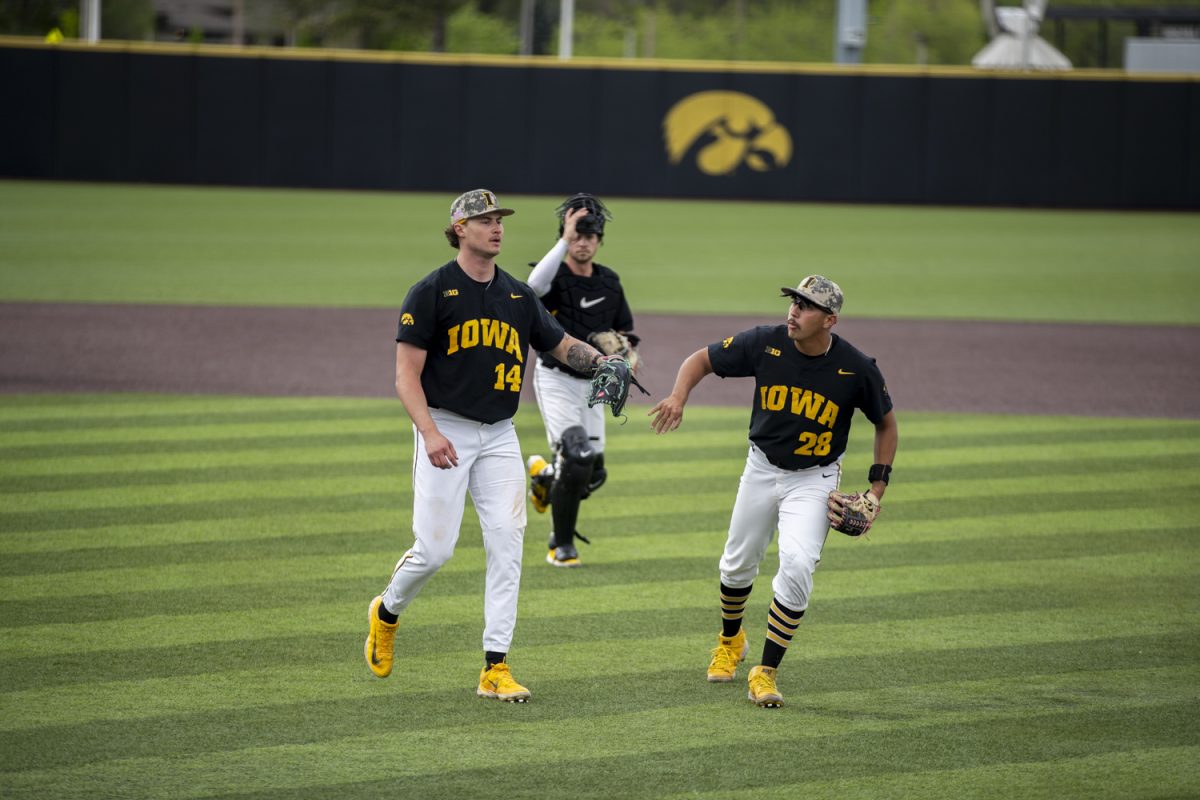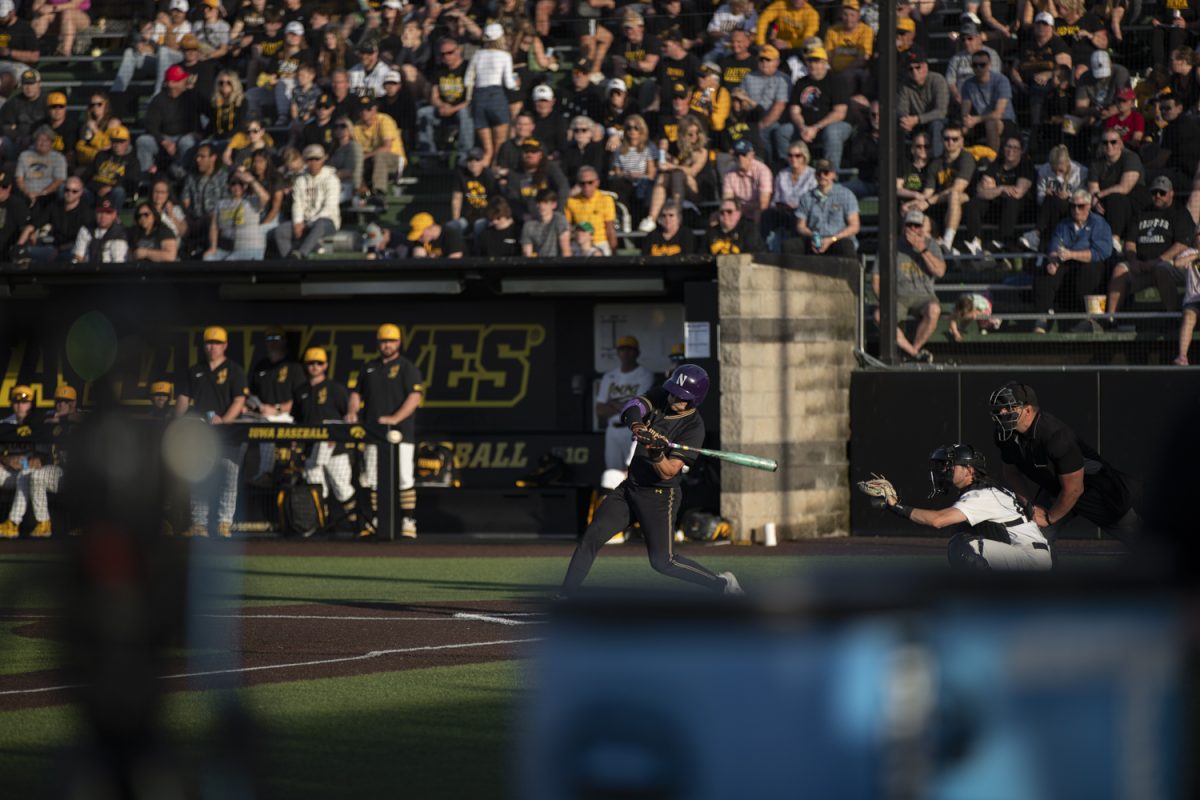Throwers and coaches alike compare it to pitching a baseball. But there’s no swinging batter in this competition. There are no strikeouts. Baseballs aren’t over 8 feet long or shaped like a spear.
“It’s not a Frisbee,” sophomore thrower Gabe Hull said about the comparison to discus, another throwing event, on April 27. A javelin, likewise, is not a baseball. But that doesn’t stop the comparisons.
“People who pick up the javelin have thrown a baseball or thrown footballs,” Scott Cappos, Iowa’s throwing coach, said. “[Javelin is] similar, but the action is a little different. We have to retrain them on how to do it.” Javelin begins and ends with the technique of the throw, which Cappos compared to the motion of a baseball pitcher. The javelin should move low and fast once the thrower releases the spear. It shouldn’t arc in the air — the spear has the lowest trajectory of other throwing events; about 27 degrees compared to 35 in other events.
“You try to keep the hand back as long as possible,” Cappos said. “You move the shoulder first, then the elbow. Then the hand and wrist come through. You’ve got to be really flexible to be able to do that.” Javelin throwers get a running start on the runway before they release the spear, adding elements of sprints into the mix. Cappos has the throwers do sprint and speed training similar to that of a long jumper, as well as medicine-ball throws.
“At the front of the throw is what’s called the penultimate step,” said junior thrower Amanda Stahle, who placed seventh in the Big Ten competition with a distance of 138-2 feet. “It’s basically a curl-hop in baseball. That allows you to get your left foot out in front of you quickly. Your right leg is able to turn, and your arm follows through with the hip movement.” The rules of a javelin competition are the same as any other throwing event: see who can throw the spear the farthest. Throwers get three chances to earn the largest distance. The top eight competitors earn spots in the finals, where the winner is eventually determined after three more attempts.
“Confidence is everything,” Stahle said “Part of being confident is going in thinking about one thing at a time. Two things maximum. [Javelin] is so technical, you have to find certain cues that work for you that can fix a bunch of things at once.” Cappos’ javelin throwers, particularly senior Matt Byers, have earned great success in the event. Byers is a three-time Big Ten champion in the event and recently earned second place at the Big Ten championship in Columbus, Ohio, with a distance of 237-8 feet.
For such an individual event, pre-competition routines are important. After she finishes a lengthy warm-up session, Stahle drinks a can of sugar-free Red Bull before she throws the spear at every meet, a tradition she’s had since her freshman year at Iowa. When she steps on the runway, Stahle holds the javelin in her right hand and loosens her shoulders before her throw. “One day I drank a Red Bull before practice and had the best practice of my life,” Stahle said. “I felt really awake, really alert. It could be a mental thing, but it’s just kind of a tradition that I have … everyone has their own little things that they do. Mine is [drinking] Red Bull.”






